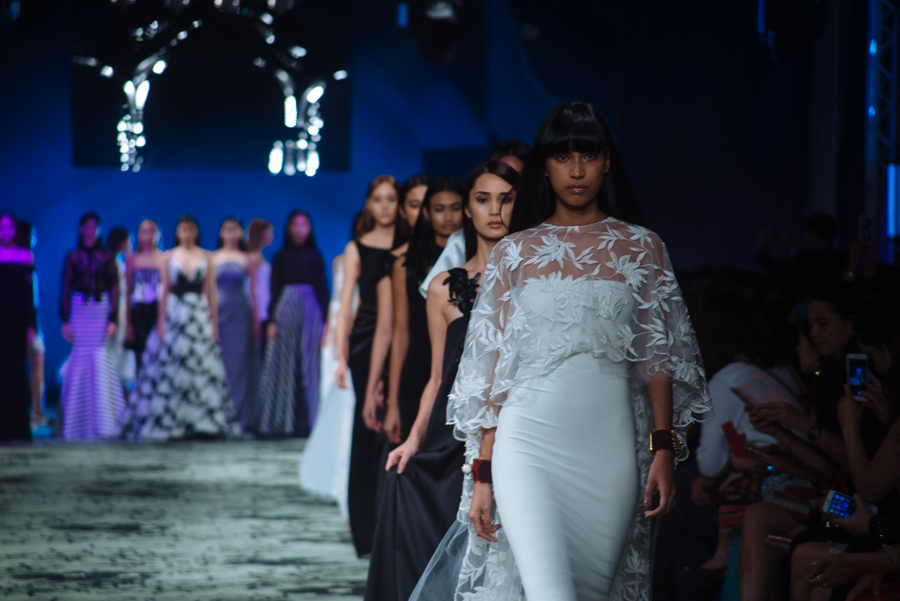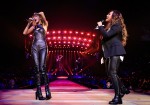When I scanned the room at the Inquirer RED show before the show began, I noticed a handful of women wearing Maureen Disini. If in case you missed the point: one, I was able to distinguish a Maureen Disini number, and two, most of the women present were in full show of their support for the designer. So far, these were definitely good tidings.
The lights were dimmed and white backlight was turned on. At the back of my head, I know Maureen well enough to expect what I was about to see: a lot of eveningwear. This is both a good thing and a bad thing. On one hand, she is known for something she does best, however, this can be limiting as a designer.
True enough, of the 41 black and white looks, at least 30 of which were dresses—with silhouettes not entirely deviating from one another—and mostly really evening numbers. It might have been Maureen playing to her strengths. After all, she is best known for her body-hugging and floor-grazing dresses that are all seamless and fluid, classic and understated. And as the models floated down the runway, this was made even clearer. You could see how their hips naturally swayed in a ultra backless black jumpsuit, how the shoulders delicately swung in a upper-baring, draped-then-pleated number, and how their bodies just radiated with femininity, be it in an embellished cropped top and full skirt pairing or even in a serpentine dress with a long lace train.
There was a sense of elegance in the collection, but there was also a sense of familiarity—we’ve seen this all before. Even if so, Mega magazine editor-in-chief Peewee Isidro believed that it was “distinctly and uniquely Maureen.” Nonetheless, the sophistication of the materials used had the most appeal. The tailoring of the tamed taffeta is impeccable, and the manipulation of mesh into reimagined classics (our eyes are on that side boob-worthy mesh vest and all white, full mesh dress!) is faultless. Whatever was achieved in celebration of construction was, design-wise, a missed opportunity in variety. Pair a number of looks side by side, and you’ll notice only a few jarring differences. The lace mid-thigh white dresses only had the sleeves and fit differ from one another, while the full-on floral A-line gowns only had their varying necklines to set them apart.
From the collection, you can see that Maureen isn’t a rebel to her own designs just yet. She stuck to her guns and women in attendance, who are among her clientele, recognized it and stood by her. Stylist Jenni Epperson liked how Maureen “stayed relevant but at the same time [remained] true to her style.” Host Tweetie de Leon-Gonzalez agreed by saying that the collection was “very feminine, very Maureen.” And to add another layer to the clothes shown, fashion blogger Ingrid Chua-Go thought Maureen was “distinctly true to the DNA of a woman.”
And it all suddenly made sense when the models—grouped and unfettered—walked down the runway in packs, exuding girl power. The Maureen Disini woman is every woman who does not subscribe to trends but invests in timeless pieces. Her idea of sartorial bravery is choosing an understated, almost nondescript gown that looks amazing and desirable when worn. And she is definitely not alone in all this. All in all, the collection was Maureen’s ever-familiar voice heard and recognized. But really, it would have been so much better if she took this chance to shout.
Photos by Patrick Segovia


